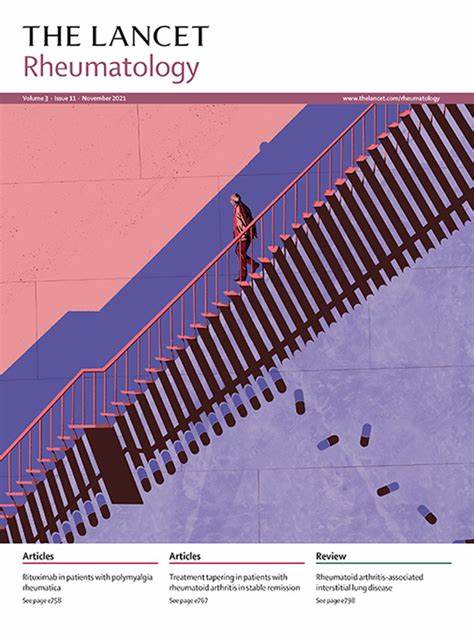绘制VEXAS综合征的感染负担:系统回顾和预防的理由。
IF 16.4
1区 医学
Q1 RHEUMATOLOGY
引用次数: 0
摘要
感染越来越被认为是空泡、E1酶、x连锁、自身炎症、躯体(VEXAS)综合征患者发病和死亡的主要原因。我们进行了一项系统综述,以表征VEXAS综合征的感染负担并提出预防策略。我们纳入了57项研究(813例患者),显示VEXAS综合征患者感染频繁,40-60%的病例严重,6-15%的病例致命。肺部感染最为常见,其次是皮肤感染和菌血症。机会致病菌,如吉氏肺囊虫、嗜肺军团菌、非结核分枝杆菌和水痘带状疱疹病毒,即使在未接受免疫抑制治疗的患者中也经常被报道,这表明存在内在的免疫功能障碍。对于感染风险高的患者,特别是接受免疫抑制治疗和淋巴细胞减少、pMet41Val突变或既往严重或复发感染的患者,应考虑使用复方新诺明(或其他肺囊虫预防药物,如阿托伐醌或喷他脒)和伐昔洛韦进行预防。泊沙康唑可能适用于正在服用阿扎胞苷的中性粒细胞减少症患者。建议接种肺炎链球菌、水痘带状疱疹病毒、流感和SARS-CoV-2疫苗。这些数据强调需要将感染风险纳入VEXAS综合征管理,并在前瞻性研究中评估预防策略。本文章由计算机程序翻译,如有差异,请以英文原文为准。
Mapping the infectious burden in VEXAS syndrome: a systematic review and rationale for prevention
Infections are increasingly recognised as a major cause of morbidity and mortality in patients with vacuoles, E1 enzyme, X-linked, autoinflammatory, somatic (VEXAS) syndrome. We conducted a systematic review to characterise the infectious burden of VEXAS syndrome and propose preventive strategies. We included 57 studies (813 patients) showing that infections in patients with VEXAS syndrome were frequent, severe in 40–60% of cases, and fatal in 6–15% of cases. Pulmonary infections were most common, followed by cutaneous infections and bacteraemia. Opportunistic pathogens, such as Pneumocystis jirovecii, Legionella pneumophila, non-tuberculous mycobacteria, and varicella zoster virus, were frequently reported, even in patients not receiving immunosuppressive therapy, which suggests intrinsic immune dysfunction. Prophylaxis with co-trimoxazole (or other Pneumocystis prophylaxis, such as atovaquone or pentamidine) and valaciclovir should particularly be considered for patients at high risk of infection, including those receiving immunosuppressive therapy and those with lymphopenia, pMet41Val mutation, or previous severe or recurrent infections. Posaconazole might be appropriate in patients with neutropenia who are taking azacitidine. Vaccination against Streptococcus pneumoniae, varicella zoster virus, influenza, and SARS-CoV-2 is recommended. These data highlight the need to integrate infectious risk into VEXAS syndrome management and to evaluate preventive strategies in prospective studies.
求助全文
通过发布文献求助,成功后即可免费获取论文全文。
去求助
来源期刊

Lancet Rheumatology
RHEUMATOLOGY-
CiteScore
34.70
自引率
3.10%
发文量
279
期刊介绍:
The Lancet Rheumatology, an independent journal, is dedicated to publishing content relevant to rheumatology specialists worldwide. It focuses on studies that advance clinical practice, challenge existing norms, and advocate for changes in health policy. The journal covers clinical research, particularly clinical trials, expert reviews, and thought-provoking commentary on the diagnosis, classification, management, and prevention of rheumatic diseases, including arthritis, musculoskeletal disorders, connective tissue diseases, and immune system disorders. Additionally, it publishes high-quality translational studies supported by robust clinical data, prioritizing those that identify potential new therapeutic targets, advance precision medicine efforts, or directly contribute to future clinical trials.
With its strong clinical orientation, The Lancet Rheumatology serves as an independent voice for the rheumatology community, advocating strongly for the enhancement of patients' lives affected by rheumatic diseases worldwide.
 求助内容:
求助内容: 应助结果提醒方式:
应助结果提醒方式:


